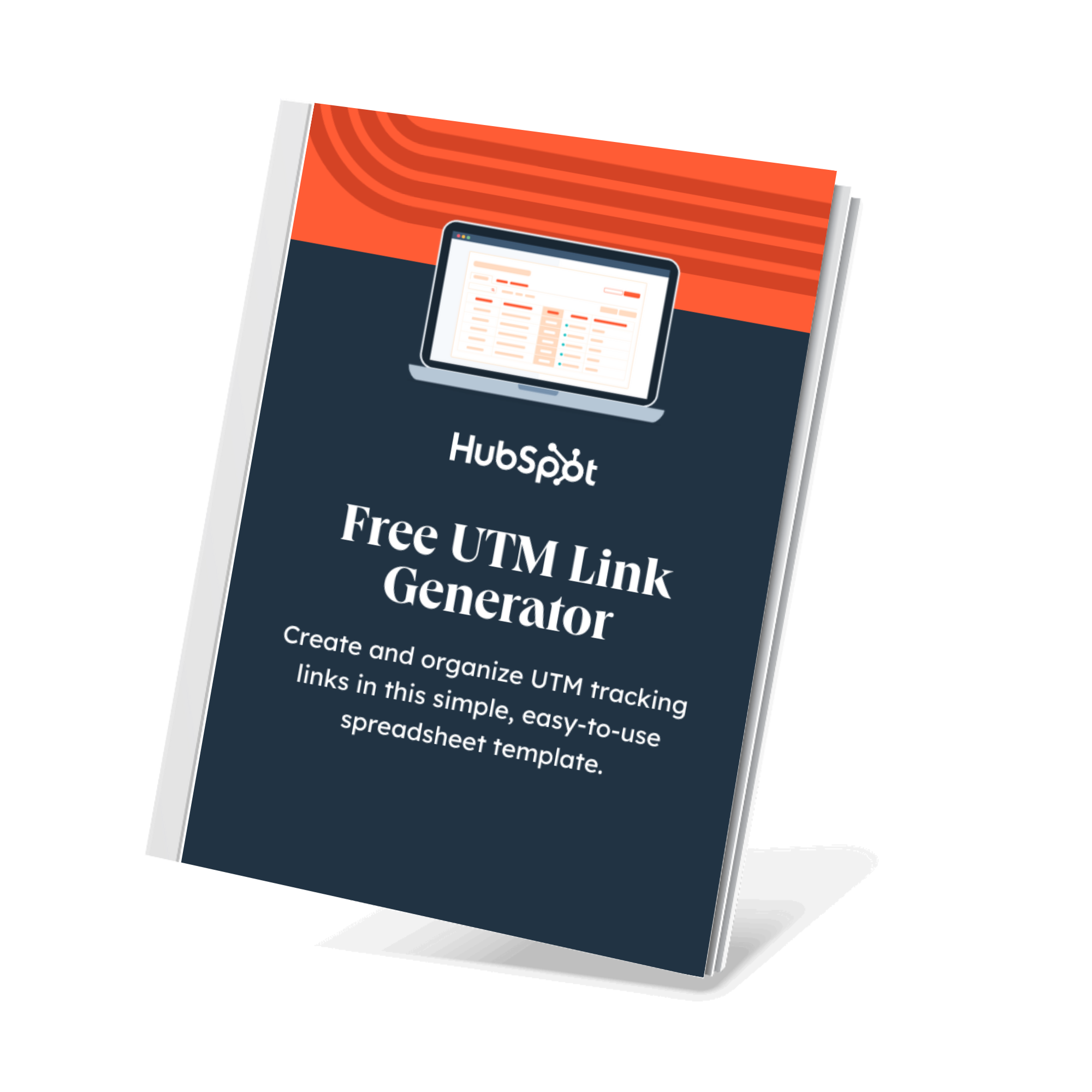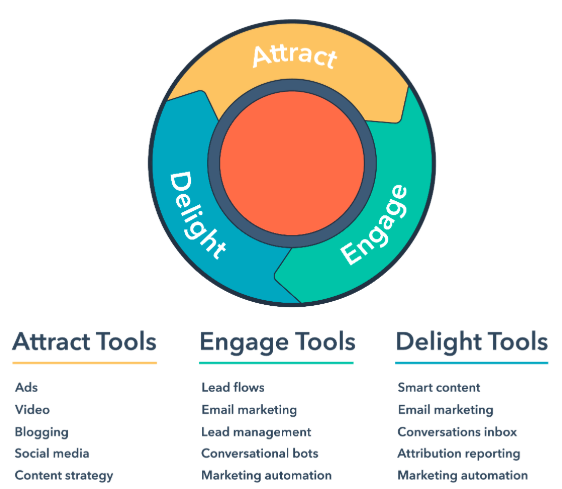What is a UTM parameter?
Simply put, UTM parameters are five tags you can add to the end of the URLs of your marketing or promotional efforts. When your appended URL is then visited, it allows analytics software to track information, such as how visitors are coming to your site and if they're interacting with any content associated with a campaign. This can be particularly useful, especially if there are multiple ways to access your online assets and you're trying to identify which channels to focus on.
Here's an example. This is the URL that will appear in your browser if you click on this Academy tweet:
![]()
Highlighted in orange are the UTM parameters that have been added to this blog post's URL for tracking purposes. You'll notice the string starts with a "?" and contains the three of the possible five tags: utm_content, utm_medium, and utm_source.
This allows marketers at HubSpot to report on how successful this Tweet is at bringing traffic to the blog post.
The addition of the UTM parameter doesn't change the content of the post. Rather, it allows for analytics to interpret the origin and basic engagement information about the visitor. The other two possible tags, utm_campaign and utm_term, were not used in this case.
Let's take a quick look at how each one of these five possible UTM tags can be used.
- Source: Used to show which site the visitors are coming from.
- Medium: Used to show which marketing channels are bringing the visitor to your site. Examples include, but aren't limited to, email, social, or cost-per-click.
- Campaign: Used to identify which campaign the promotion is associated with.
- Term: Used to manually identify paid keywords you're targeting with your campaign.
- Content: Used to identify the exact element on your ad or promotion that was clicked. This is often used for optimization purposes.
Why are UTM parameters important?
Using a combination of the five tags can help your team start to develop valuable insights about which promotional efforts are bringing traffic to your site.
This type of information, in turn, allows you to gauge which types of campaigns are working and which may not be performing as expected.

Gathering data about which types of promotions or content is working for your website audience opens the door for optimization and experimentation. Conversational tools such as live chat, Facebook Messenger, and HubSpot Messages are starting to enable visitors to communicate with companies instantaneously.
You can use UTM parameters in email, messaging, or even social campaigns to determine which of those channels work best for your buyer personas and current website audience. Knowing which channels work best can help your team target and use the types of content that perform well, which can positively impact your campaigns' return on investment, or ROI.
What types of tools can help build and track UTM parameters?
Tools like HubSpot's tracking URL builder can be a great way to generate links containing UTM parameters. There are tons of other free UTM generator tools on the market to track your links. It is currently considered a best practice to use a tracking URL when directing traffic to a landing page from somewhere other than a call-to-action button on your own site. This information is then bucketed into your Sources or Traffic Analytics reports in HubSpot.
Are you a fan of Google Analytics? You can also use tools such as the Campaign URL builder with Google to generate links with custom UTM parameters to track your current promotional efforts. Find out more about using UTM parameters and Google Analytics here.


.webp)







![Become a Content Marketing Expert This Year [Course + Workbook]](https://blog.hubspot.com/hubfs/content-marketing-certification-course-image.jpeg)
